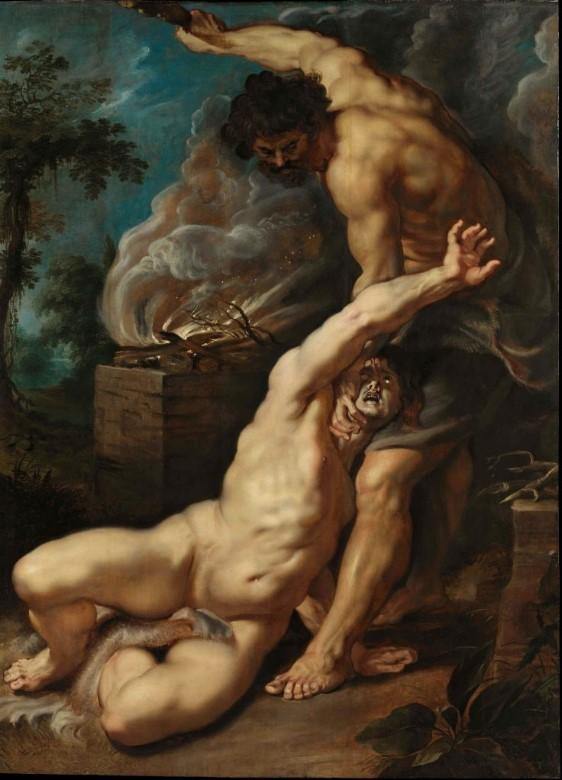Description
The painting "Cain Killing Abel" by Peter Paul Rubens is a Flemish Baroque masterpiece that has captivated art lovers for centuries. This work represents the moment in which Cain, the eldest son of Adam and Eve, murders his brother Abel in an act of jealousy and envy.
The painting's composition is impressive, with a wealth of detail and complexity that only an artist of the stature of Rubens could achieve. The scene takes place in a mountainous landscape, with a dramatic sky that reflects the tension of the moment. The figure of Cain, with his muscular body and angry face, dominates the scene, while Abel lies defenseless on the ground.
The use of color in the painting is another highlight. Rubens uses a rich and vibrant palette, with warm and cool tones creating a dramatic contrast. The details in the characters' clothing and accessories are impressive, with an abundance of textures and patterns adding depth and realism to the artwork.
The story behind the painting is also fascinating. Rubens created this work in 1608, during his stay in Italy, and it was commissioned by Cardinal Borromeo for his private chapel in Milan. The painting was considered one of Rubens' most important works and became a model for future depictions of the subject.
Also, there are little-known aspects of the painting that make it even more interesting. For example, Rubens is believed to have used his wife, Isabella Brant, as the model for the figure of Eve in the painting. It is also said that the figure of Cain was inspired by Rubens himself, who portrayed himself in several of his works.

